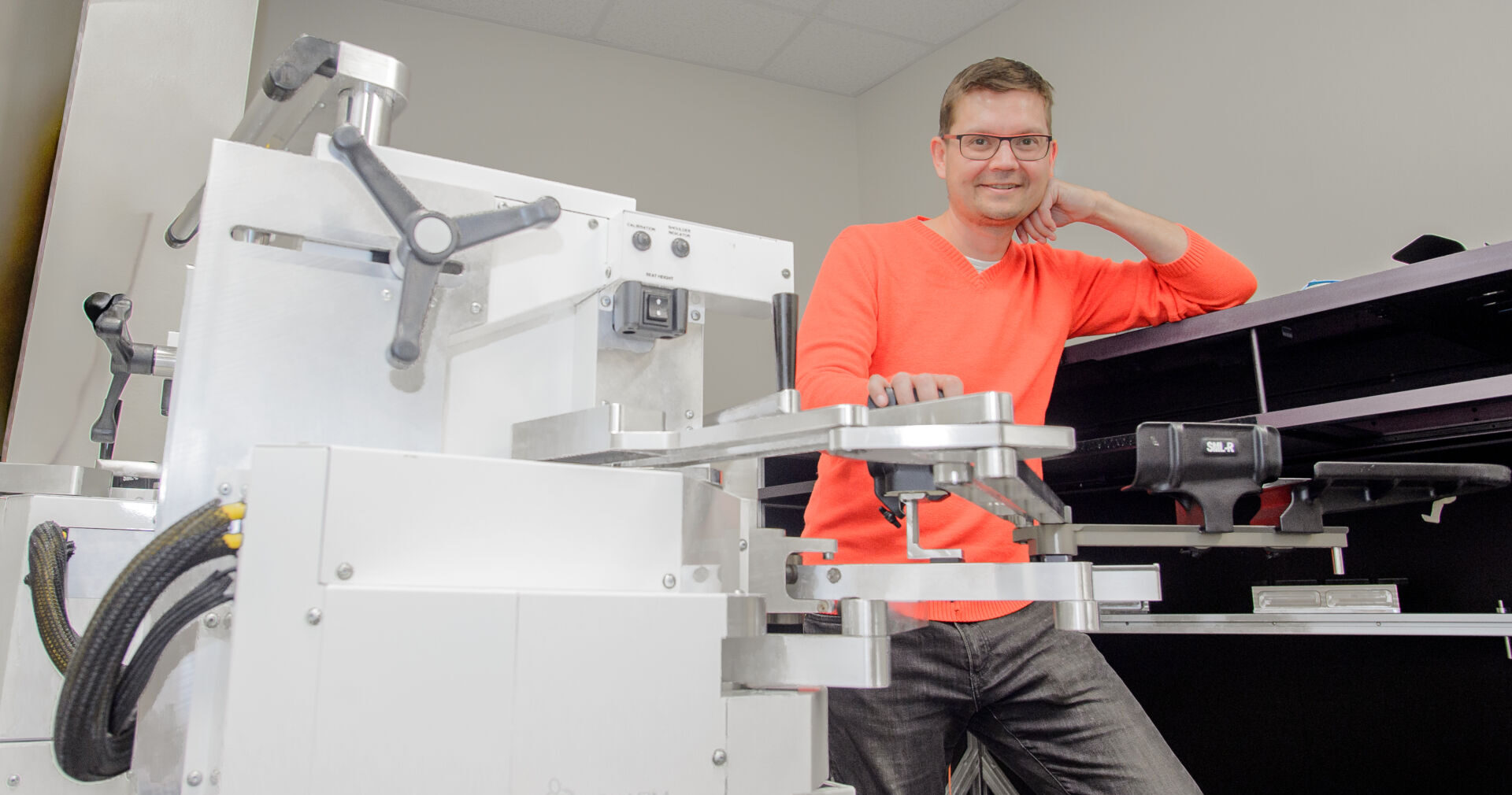Science
New Study Reveals Brain’s Anticipatory Mechanisms in Movement

A groundbreaking study from researchers at Western University has unveiled significant insights into how the brain predicts and prepares for unexpected disturbances during movement. Published in the prestigious journal Nature, this research may transform approaches to rehabilitation following strokes and injuries, as well as contribute to the development of advanced brain-computer interfaces.
The study’s findings illustrate that the brain’s motor circuits actively configure themselves in anticipation of potential disruptions rather than simply reacting to sensory signals. This proactive approach enhances the speed and accuracy of our responses, according to Andrew Pruszynski, Canada Research Chair in Sensorimotor Neuroscience and a professor at the Schulich School of Medicine & Dentistry.
To investigate these phenomena, the research team, led by Jonathan A. Michaels, engaged participants in an experiment using a robotic device that nudged their arms in various directions. Some participants received cues indicating the likely direction of the push. The results demonstrated that individuals adjusted their movements based on these probabilities, with their muscle responses becoming more effective when the disturbances aligned with their brain’s expectations.
“This study, which took years of effort, highlights how much we still have to learn about how the brain works — and it underscores the importance of basic research in making such discoveries,” Michaels stated. He is now an assistant professor in the Faculty of Health at York University.
Implications for Rehabilitation and Brain-Computer Interfaces
The collaboration included notable figures such as Jörn Diedrichsen, Western Research Chair for Motor Control and Computational Neuroscience, and psychology professor Paul Gribble, who served as co-principal investigators in Western’s Sensorimotor Superlab. The study not only sheds light on fundamental neural mechanisms but also has practical implications for rehabilitation practices.
In their pursuit of understanding, the researchers recorded activity from thousands of neurons in monkeys performing tasks similar to those completed by human participants. Their findings indicate that motor circuits engage in a preparatory state, anticipating each potential disturbance and linking it to appropriate responses. These insights could lead to enhanced rehabilitation techniques for stroke victims, paving the way for innovative treatment strategies.
Pruszynski remarked, “Our hope is that sharing this data will lead to additional discoveries related to how motor activity is organized in the brain and, in the long term, instigate practical advances like new strategies for stroke rehabilitation or better algorithms for driving brain-computer interfaces.”
The research utilized advanced technology known as Neuropixels, which features thousands of recording sites on a thin probe. This methodology represents a significant advancement from previous techniques, allowing researchers to gather data more efficiently.
Transforming Our Understanding of Neural Coordination
Pruszynski’s research primarily focuses on upper body motor skills, such as reaching and grasping. He emphasizes the importance of studying coordinated patterns of neuron activity, stating, “It is now more evident than ever that you can’t understand the brain fully by studying one neuron at a time.”
The study represents a notable shift in the field, as Pruszynski reflects on the progress made since his own graduate studies, during which he recorded approximately 1,000 neurons over seven years. In contrast, modern technology enables researchers to capture the activity of 1,000 neurons in just a couple of days.
Overall, this research not only contributes to the scientific understanding of the brain’s predictive capabilities but also opens new avenues for applying this knowledge in clinical settings. The collaborative efforts of the Western University team mark a significant achievement in neuroscience, with potential ramifications for enhancing human movement and rehabilitation practices.
-

 Education2 months ago
Education2 months agoBrandon University’s Failed $5 Million Project Sparks Oversight Review
-

 Lifestyle3 months ago
Lifestyle3 months agoWinnipeg Celebrates Culinary Creativity During Le Burger Week 2025
-

 Science3 months ago
Science3 months agoMicrosoft Confirms U.S. Law Overrules Canadian Data Sovereignty
-

 Health3 months ago
Health3 months agoMontreal’s Groupe Marcelle Leads Canadian Cosmetic Industry Growth
-

 Science3 months ago
Science3 months agoTech Innovator Amandipp Singh Transforms Hiring for Disabled
-

 Technology3 months ago
Technology3 months agoDragon Ball: Sparking! Zero Launching on Switch and Switch 2 This November
-

 Education3 months ago
Education3 months agoRed River College Launches New Programs to Address Industry Needs
-

 Technology3 months ago
Technology3 months agoGoogle Pixel 10 Pro Fold Specs Unveiled Ahead of Launch
-

 Technology1 month ago
Technology1 month agoDiscord Faces Serious Security Breach Affecting Millions
-

 Business2 months ago
Business2 months agoRocket Lab Reports Strong Q2 2025 Revenue Growth and Future Plans
-

 Science3 months ago
Science3 months agoChina’s Wukong Spacesuit Sets New Standard for AI in Space
-

 Education3 months ago
Education3 months agoAlberta Teachers’ Strike: Potential Impacts on Students and Families
-

 Technology3 months ago
Technology3 months agoWorld of Warcraft Players Buzz Over 19-Quest Bee Challenge
-

 Business3 months ago
Business3 months agoNew Estimates Reveal ChatGPT-5 Energy Use Could Soar
-

 Business3 months ago
Business3 months agoDawson City Residents Rally Around Buy Canadian Movement
-

 Education3 months ago
Education3 months agoNew SĆIȺNEW̱ SṮEȽIṮḴEȽ Elementary Opens in Langford for 2025/2026 Year
-

 Technology1 month ago
Technology1 month agoHuawei MatePad 12X Redefines Tablet Experience for Professionals
-

 Technology3 months ago
Technology3 months agoFuture Entertainment Launches DDoD with Gameplay Trailer Showcase
-

 Business3 months ago
Business3 months agoBNA Brewing to Open New Bowling Alley in Downtown Penticton
-

 Technology3 months ago
Technology3 months agoInnovative 140W GaN Travel Adapter Combines Power and Convenience
-

 Technology3 months ago
Technology3 months agoGlobal Launch of Ragnarok M: Classic Set for September 3, 2025
-

 Science3 months ago
Science3 months agoXi Labs Innovates with New AI Operating System Set for 2025 Launch
-

 Technology3 months ago
Technology3 months agoNew IDR01 Smart Ring Offers Advanced Sports Tracking for $169
-

 Technology3 months ago
Technology3 months agoDiscover the Relaxing Charm of Tiny Bookshop: A Cozy Gaming Escape










